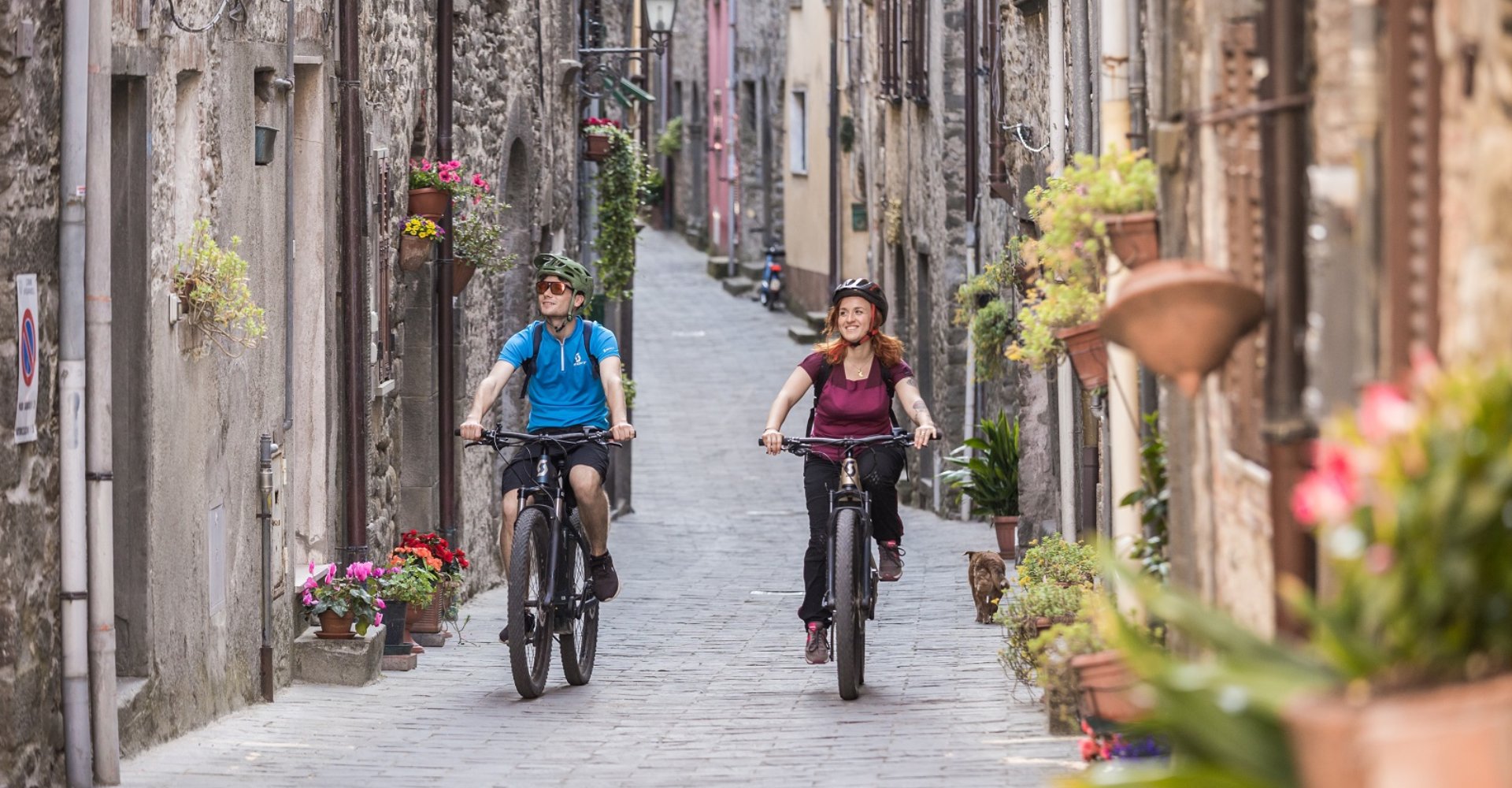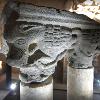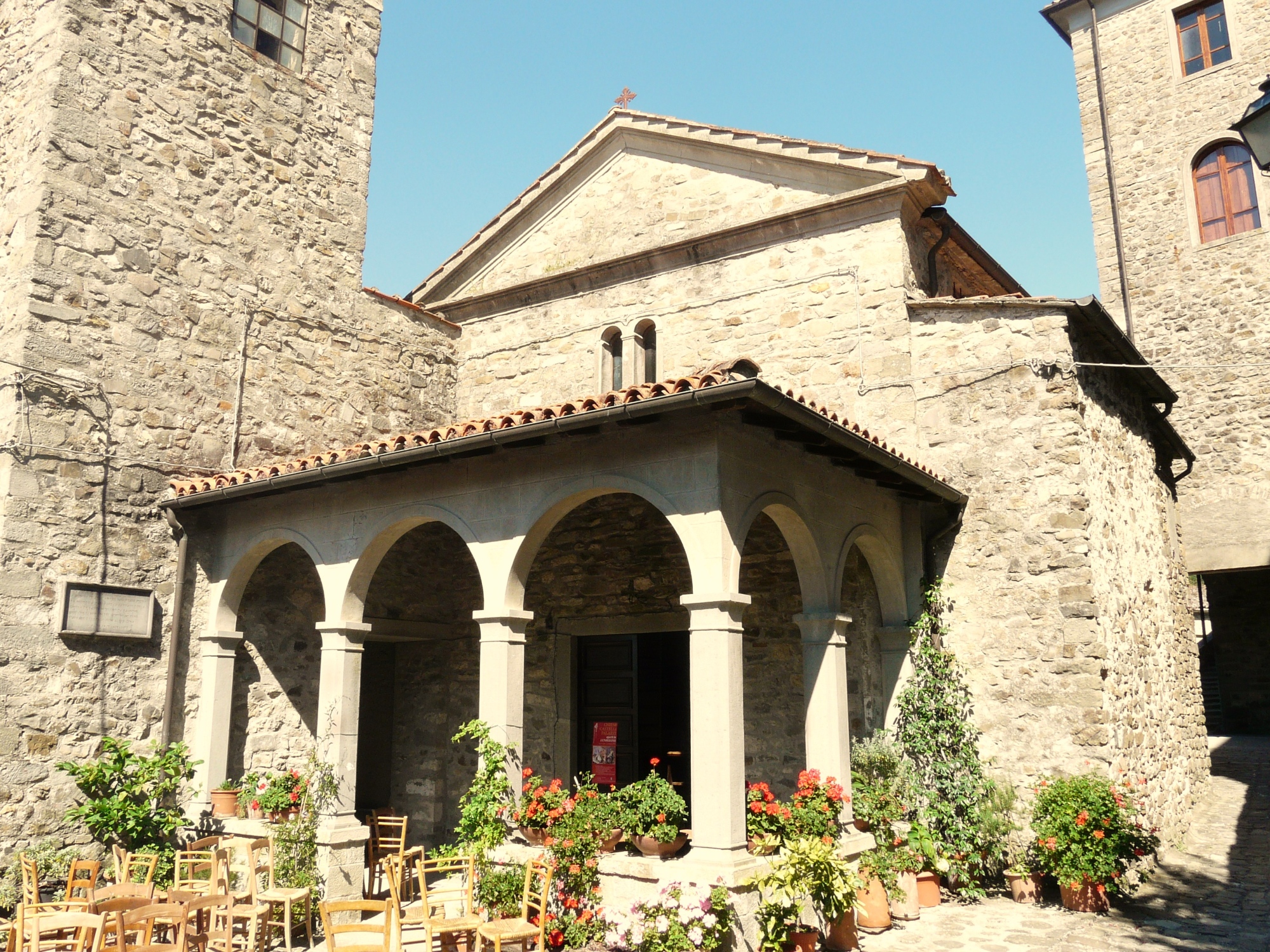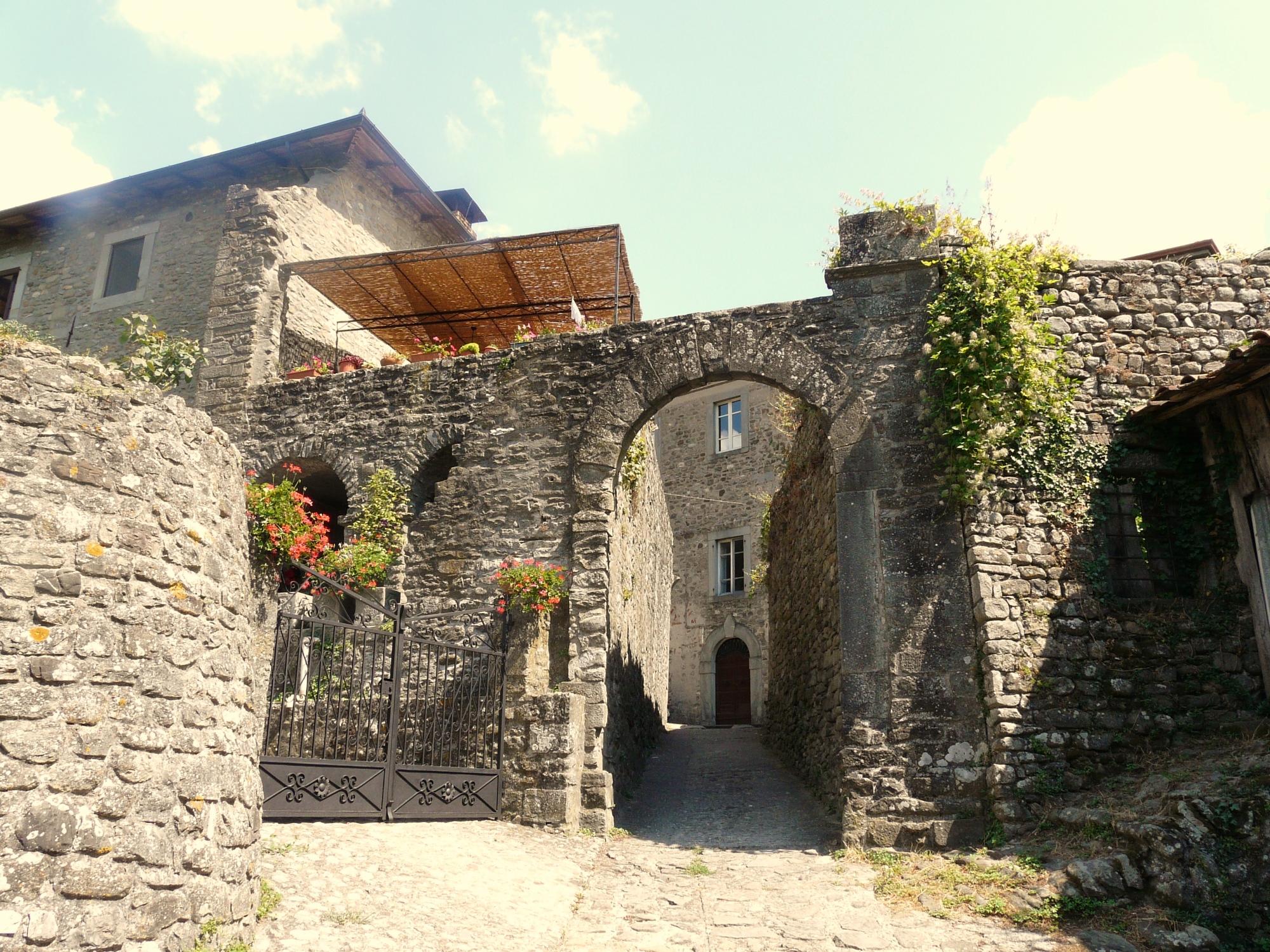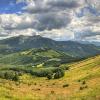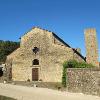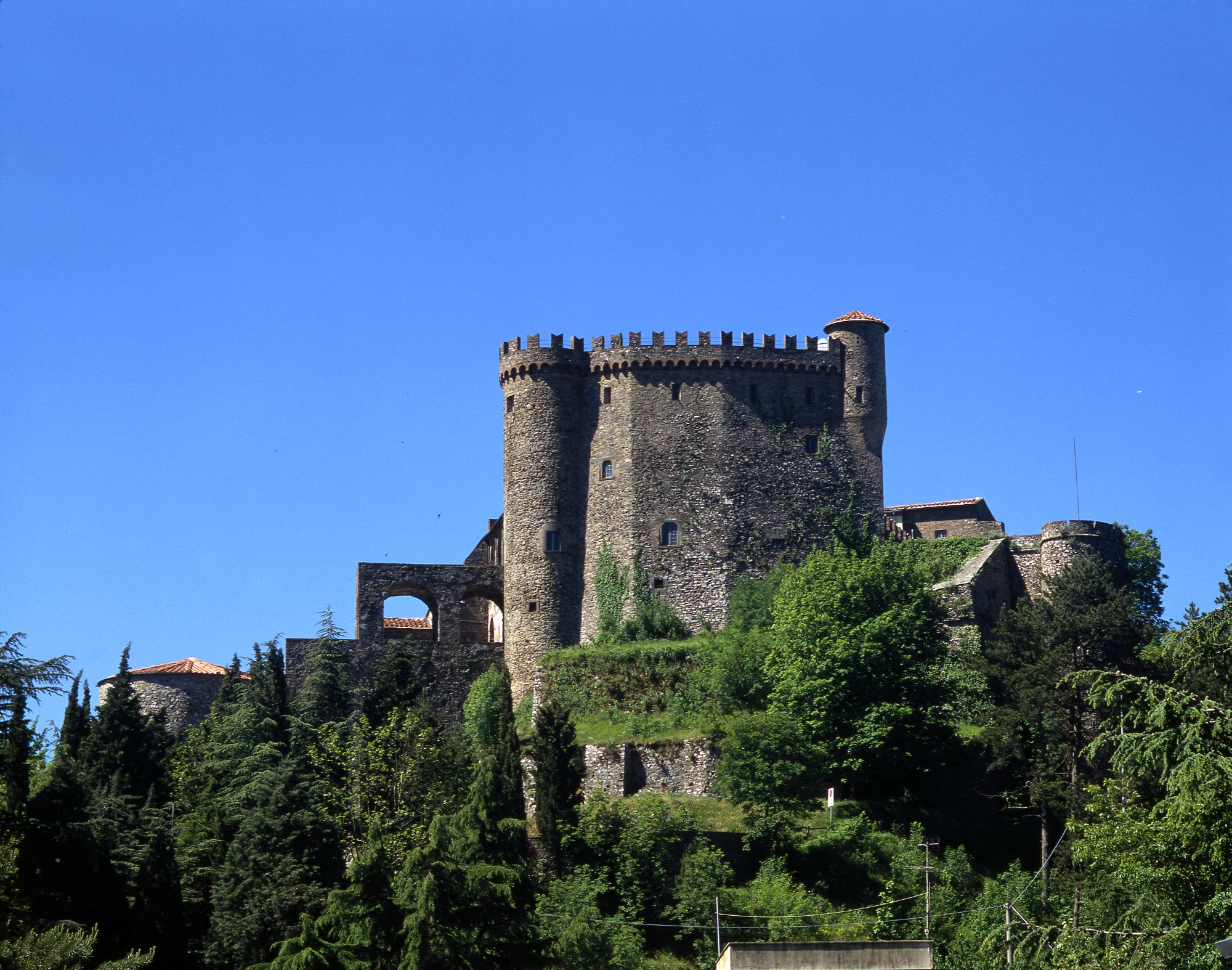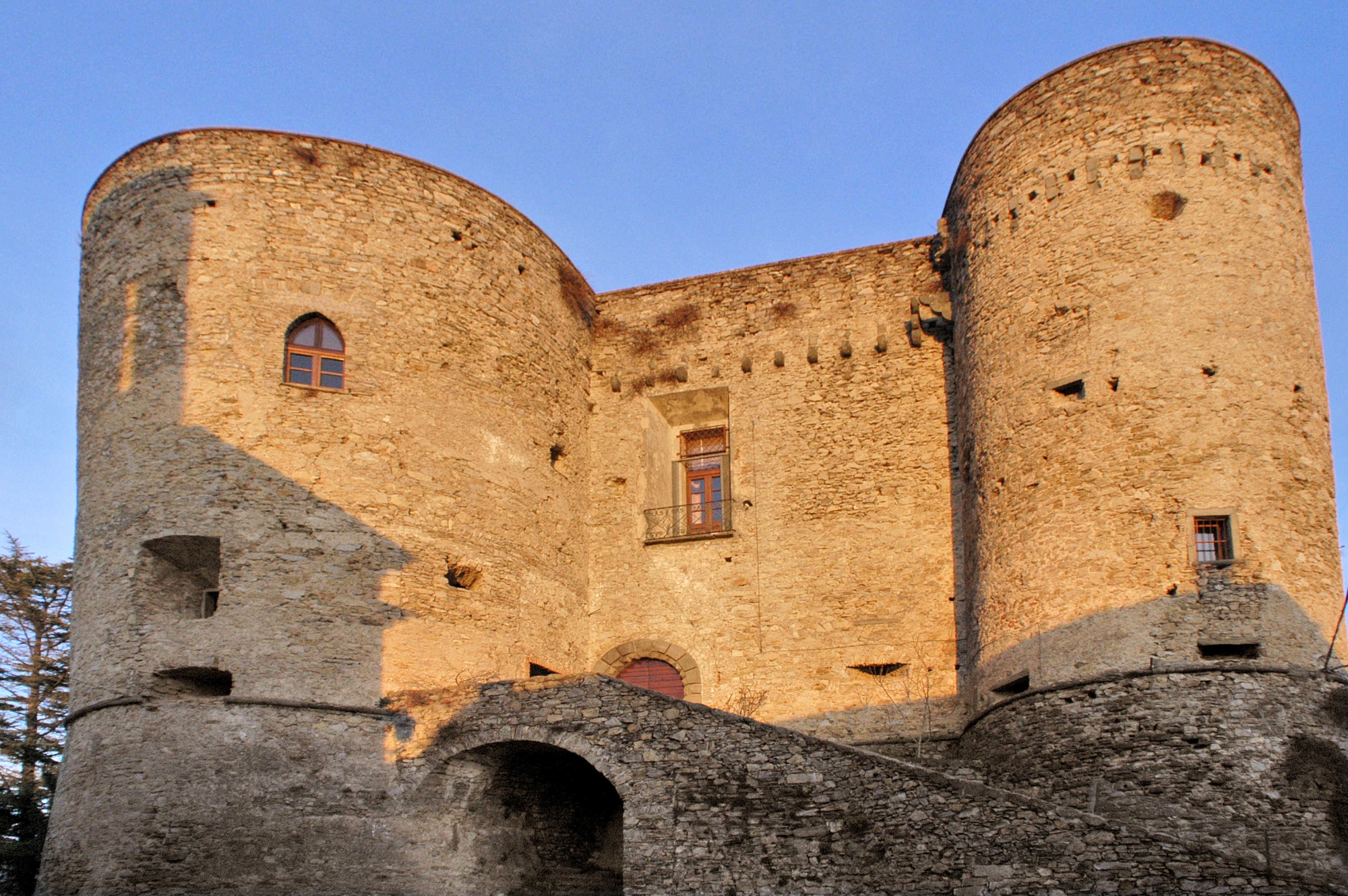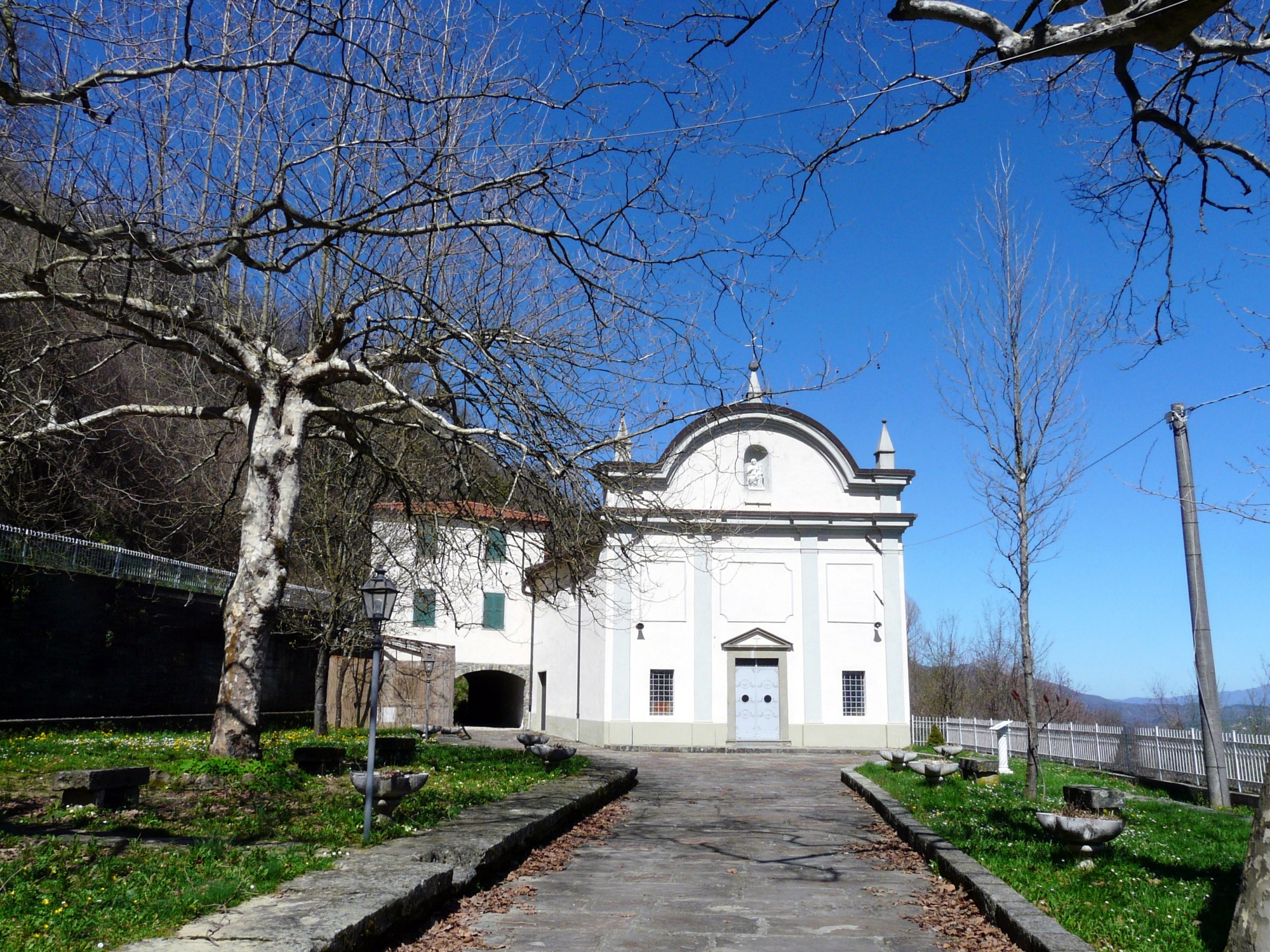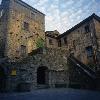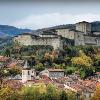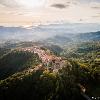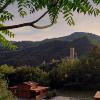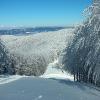The walk in the village, entirely surrounded by walls more than ten meters high, starts from the stone door facing Villafranca. Along the way you can admire numerous "talking portals", typical of the Apennine villages such as Tavernelle and Camporaghena , with sandstone architraves and decorated with bas-reliefs of auspicious symbols or work tools such as scissors, probably made to indicate the presence of a tailor's shop.
You soon reach the small square with the church dedicated to Saints Gervasio and Protasio. The building, dating back to 1585, overlaps with a much older structure that still exists under the current church. Inside there is a splendid seventeenth-century marble altar which preserves the relics of four saints celebrated every year on the second Sunday of May which, according to documents, arrived in Virgoletta from Rome in 1666. Behind the altar of the church, a beautiful marble altarpiece of fifteenth-century representing the Virgin sitting on a throne with the child, between saints Gervasio and Protasio, martyrs dedicatees of the parish, attributed to the Master of Virgoletta.
